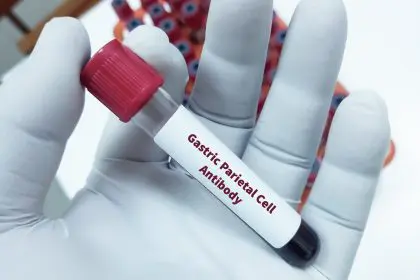For decades, medical understanding of Parkinson’s disease focused exclusively on the brain, specifically the death of dopamine-producing neurons that control movement. This narrow view shaped treatment approaches and left millions of patients and families feeling helpless as they watched tremors, stiffness, and walking difficulties gradually worsen over time.
Recent discoveries have completely revolutionized our understanding of this devastating condition. Parkinson’s disease doesn’t begin in the brain at all—it starts in the digestive system, sometimes decades before the first tremor appears. This groundbreaking insight opens entirely new possibilities for early detection, prevention, and treatment that could transform outcomes for millions of people worldwide.
The implications of this discovery extend far beyond academic curiosity. Understanding that Parkinson’s begins in the gut means that digestive symptoms often dismissed as minor inconveniences may actually represent the earliest warning signs of developing brain disease. This knowledge empowers people to recognize these signals and take action long before irreversible brain damage occurs.
The traditional view of Parkinson’s disease
Parkinson’s disease affects over 10 million people worldwide, making it the second most common neurodegenerative disorder after Alzheimer’s disease. The condition is characterized by the progressive death of dopamine-producing neurons in a brain region called the substantia nigra, leading to the classic motor symptoms that most people associate with the disease.
The four cardinal signs include tremor at rest, muscle rigidity, slowness of movement, and postural instability. These symptoms typically appear gradually and worsen over time as more dopamine neurons die. By the time motor symptoms become noticeable, patients have already lost 60-80 percent of their dopamine-producing brain cells.
This delayed symptom onset created a frustrating treatment paradox. By the time people received a Parkinson’s diagnosis, extensive brain damage had already occurred, limiting the effectiveness of available treatments. The focus on brain-centered approaches also meant that many early warning signs occurring in other body systems were overlooked or dismissed as unrelated issues.
Traditional treatments concentrated on replacing lost dopamine through medications like levodopa or stimulating remaining dopamine neurons through deep brain stimulation. While these approaches provide symptom relief, they don’t address the underlying disease process or prevent further neurodegeneration.
The gut-brain connection revelation
The digestive system and brain maintain constant communication through multiple pathways, including the vagus nerve, immune system, and hormone networks. This bidirectional communication system, known as the gut-brain axis, allows digestive health to profoundly influence brain function and vice versa.
The gut contains the largest concentration of neurons outside the brain, earning it the nickname “second brain.” The enteric nervous system includes over 500 million neurons embedded in the intestinal wall, more than found in the spinal cord. This extensive neural network operates semi-independently while maintaining constant communication with the central nervous system.
The same proteins that accumulate abnormally in Parkinson’s patients’ brains also appear in their digestive systems, often years before brain involvement becomes apparent. These misfolded proteins, called alpha-synuclein, form toxic clumps that damage neurons wherever they accumulate. The discovery of these proteins in gut tissue long before brain symptoms develop suggests that the disease process begins in the digestive system.
The vagus nerve, which connects the brain stem to multiple organs including the stomach and intestines, appears to serve as a highway for disease transmission from gut to brain. This nerve provides a direct pathway for misfolded proteins to travel from the digestive system to brain regions affected by Parkinson’s disease.
Early digestive warning signs
Constipation represents the most common and earliest digestive symptom of Parkinson’s disease, often appearing 10-20 years before motor symptoms develop. This isn’t ordinary occasional constipation but persistent, severe difficulty with bowel movements that progressively worsens over time.
The constipation associated with early Parkinson’s occurs because the same protein accumulations that eventually damage brain neurons also affect the neurons controlling intestinal muscle contractions. As these enteric neurons become damaged, the coordinated muscle movements necessary for normal bowel function become impaired.
Gastroparesis, or delayed stomach emptying, represents another early digestive manifestation that often goes unrecognized. People with developing Parkinson’s may experience persistent feelings of fullness, nausea, bloating, and early satiety during meals. These symptoms occur because the stomach muscles lose their ability to contract effectively, causing food to remain in the stomach longer than normal.
Loss of smell, while not technically a digestive symptom, often accompanies early gut involvement in Parkinson’s disease. The olfactory system shares connections with brain regions that process digestive signals, and damage to these interconnected networks can affect both smell perception and digestive function simultaneously.
Excessive drooling or difficulty swallowing may also appear years before motor symptoms, reflecting dysfunction in the neural networks that coordinate swallowing reflexes and saliva production. These symptoms often develop so gradually that people adapt without recognizing their significance.
The alpha-synuclein protein pathway
Alpha-synuclein proteins normally help regulate neurotransmitter release and maintain synaptic function in healthy neurons. However, under certain conditions, these proteins begin folding incorrectly and forming toxic clumps that damage cellular machinery and ultimately kill neurons.
In Parkinson’s disease, alpha-synuclein aggregation appears to begin in the enteric nervous system before spreading to the brain through connected neural pathways. Environmental toxins, infections, chronic inflammation, and genetic susceptibility may all contribute to the initial protein misfolding that triggers the disease process.
Once alpha-synuclein aggregation begins in gut neurons, the misfolded proteins appear to spread in a prion-like manner, corrupting normal proteins they encounter and gradually extending the damage throughout connected neural networks. This spreading pattern explains the progressive nature of Parkinson’s symptoms and their predictable sequence of appearance.
The vagus nerve serves as the primary conduit for this protein spreading from gut to brain. People who have undergone surgical vagus nerve cutting (vagotomy) for peptic ulcer treatment show significantly reduced Parkinson’s disease risk, supporting the theory that this nerve facilitates disease transmission from digestive system to brain.
Understanding this pathway opens possibilities for interventions that could prevent or slow disease progression by targeting the gut phase before brain involvement occurs. Treatments that reduce inflammation, support healthy protein folding, or block protein spreading could potentially prevent Parkinson’s development entirely.
The microbiome connection
The trillions of bacteria, viruses, and other microorganisms living in the digestive system profoundly influence both gut and brain health through multiple mechanisms. This microbiome produces neurotransmitters, regulates inflammation, maintains intestinal barrier function, and communicates directly with the nervous system.
People with Parkinson’s disease consistently show altered gut microbiome composition compared to healthy individuals. They typically have reduced populations of beneficial bacteria that produce anti-inflammatory compounds and maintain healthy gut barrier function, while having increased numbers of bacteria associated with inflammation and intestinal permeability.
These microbiome changes often precede motor symptom development, suggesting they may contribute to disease initiation rather than simply resulting from the condition. Certain bacterial species appear particularly important for producing compounds that protect neurons from alpha-synuclein aggregation and maintaining healthy protein folding.
The “leaky gut” phenomenon associated with microbiome disruption may allow inflammatory compounds and bacterial toxins to enter systemic circulation and eventually reach the brain, contributing to neuroinflammation that accelerates neurodegeneration. Maintaining healthy gut barrier function through optimal microbiome composition may help prevent this inflammatory cascade.
Dietary choices profoundly influence microbiome composition and gut barrier integrity. Diets high in processed foods, sugar, and unhealthy fats promote inflammatory bacterial populations, while diets rich in fiber, polyphenols, and diverse plant foods support beneficial microbes that protect against neurodegeneration.
Environmental triggers and gut vulnerability
The digestive system represents the body’s primary interface with environmental toxins, making it particularly vulnerable to factors that may trigger Parkinson’s disease development. Pesticides, heavy metals, industrial chemicals, and other environmental toxins concentrate in digestive tissues and can directly damage enteric neurons.
Pesticide exposure shows particularly strong associations with Parkinson’s risk, with agricultural workers and people living near farms showing elevated disease rates. These chemicals may trigger alpha-synuclein misfolding in gut neurons, initiating the cascade that eventually spreads to the brain through vagus nerve pathways.
Chronic infections in the digestive system may also contribute to disease development by promoting inflammation and disrupting normal protein folding mechanisms. Helicobacter pylori infections, which cause stomach ulcers, show complex relationships with Parkinson’s risk that may depend on timing, bacterial strains, and individual susceptibility factors.
The gut’s role as an environmental interface means that dietary and lifestyle interventions targeting digestive health may provide powerful tools for disease prevention. Reducing toxin exposure, supporting detoxification pathways, and maintaining healthy gut barrier function could all help prevent the initial triggers that start the Parkinson’s disease process.
Protective dietary strategies
Certain dietary patterns appear to protect against Parkinson’s development by supporting gut health, reducing inflammation, and maintaining healthy protein folding mechanisms. The Mediterranean diet, rich in olive oil, fish, vegetables, and polyphenols, consistently associates with reduced Parkinson’s risk in population studies.
Omega-3 fatty acids from fish and other sources provide powerful anti-inflammatory effects that may protect both gut and brain neurons from damage. These healthy fats also support cell membrane integrity and may help maintain proper protein folding mechanisms that prevent alpha-synuclein aggregation.
Polyphenol compounds found in berries, green tea, dark chocolate, and colorful vegetables possess antioxidant and anti-inflammatory properties that protect neurons from damage. These compounds also promote the growth of beneficial gut bacteria that support healthy digestion and reduce systemic inflammation.
Fiber-rich foods support beneficial microbiome populations that produce short-chain fatty acids with neuroprotective properties. These bacterial metabolites reduce inflammation, support gut barrier integrity, and may directly protect neurons from alpha-synuclein-related damage.
Fermented foods containing beneficial probiotics may help restore healthy microbiome balance and support gut barrier function. Regular consumption of yogurt, kefir, sauerkraut, kimchi, and other fermented foods provides diverse beneficial bacteria that support digestive and neurological health.
Early intervention opportunities
Recognizing that Parkinson’s begins in the gut creates unprecedented opportunities for early intervention before irreversible brain damage occurs. People experiencing persistent digestive symptoms, particularly constipation combined with loss of smell, should consider comprehensive evaluation for early Parkinson’s signs.
Advanced diagnostic techniques can now detect alpha-synuclein accumulation in gut tissues through simple colonoscopy biopsies, potentially identifying disease years before brain symptoms appear. This early detection capability opens possibilities for interventions that could prevent or dramatically slow disease progression.
Gut-focused interventions during the pre-motor phase might include targeted probiotic therapy, anti-inflammatory dietary changes, toxin avoidance strategies, and treatments designed to support healthy protein folding. These approaches could potentially halt disease progression before significant brain involvement occurs.
Regular monitoring of digestive function, microbiome composition, and inflammatory markers could help track intervention effectiveness and guide treatment adjustments. This personalized approach based on individual gut health status represents a dramatic departure from traditional one-size-fits-all Parkinson’s treatments.
Hope for prevention and treatment
The discovery that Parkinson’s begins in the gut rather than the brain fundamentally changes the outlook for this devastating disease. Instead of waiting helplessly for symptoms to appear and then managing progressive decline, people now have opportunities to recognize early warning signs and take protective action.
This gut-centric understanding suggests that many cases of Parkinson’s disease might be preventable through appropriate digestive health interventions implemented before brain involvement occurs. Even for people with existing symptoms, gut-focused treatments could slow progression and improve quality of life.
The shift from brain-only to gut-brain thinking also opens new research directions that could lead to breakthrough treatments. Targeting the disease process at its source in the digestive system may prove more effective than attempting to repair already-damaged brain circuits.
Most importantly, this knowledge empowers individuals to take control of their Parkinson’s risk through digestive health optimization. Simple changes in diet, lifestyle, and environmental exposure could have profound impacts on disease prevention, offering hope where none existed before.
Understanding that Parkinson’s disease begins in the gut represents more than just scientific curiosity—it offers genuine hope for preventing and treating a condition that has long seemed inevitable and unstoppable. This paradigm shift promises to transform outcomes for millions of people while opening entirely new avenues for maintaining lifelong brain health through digestive wellness.
















